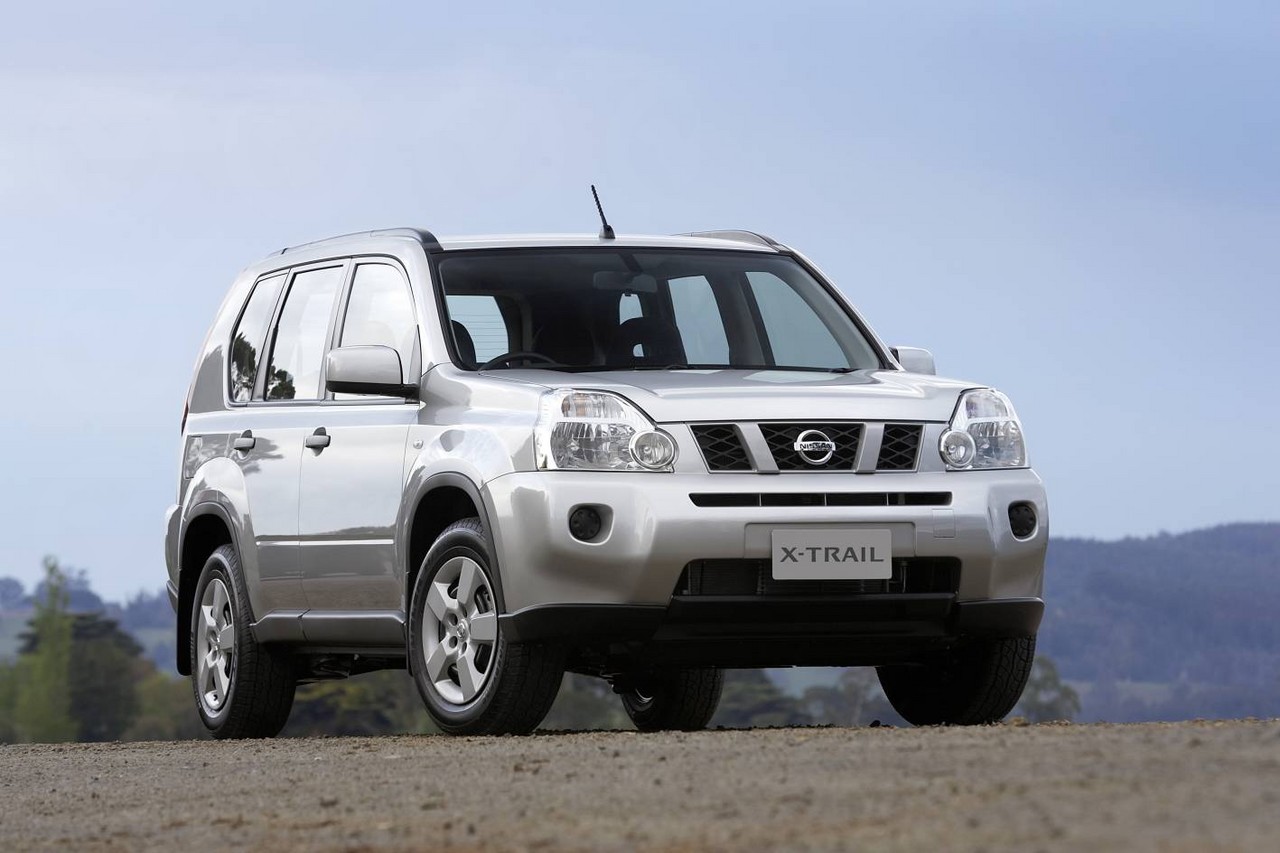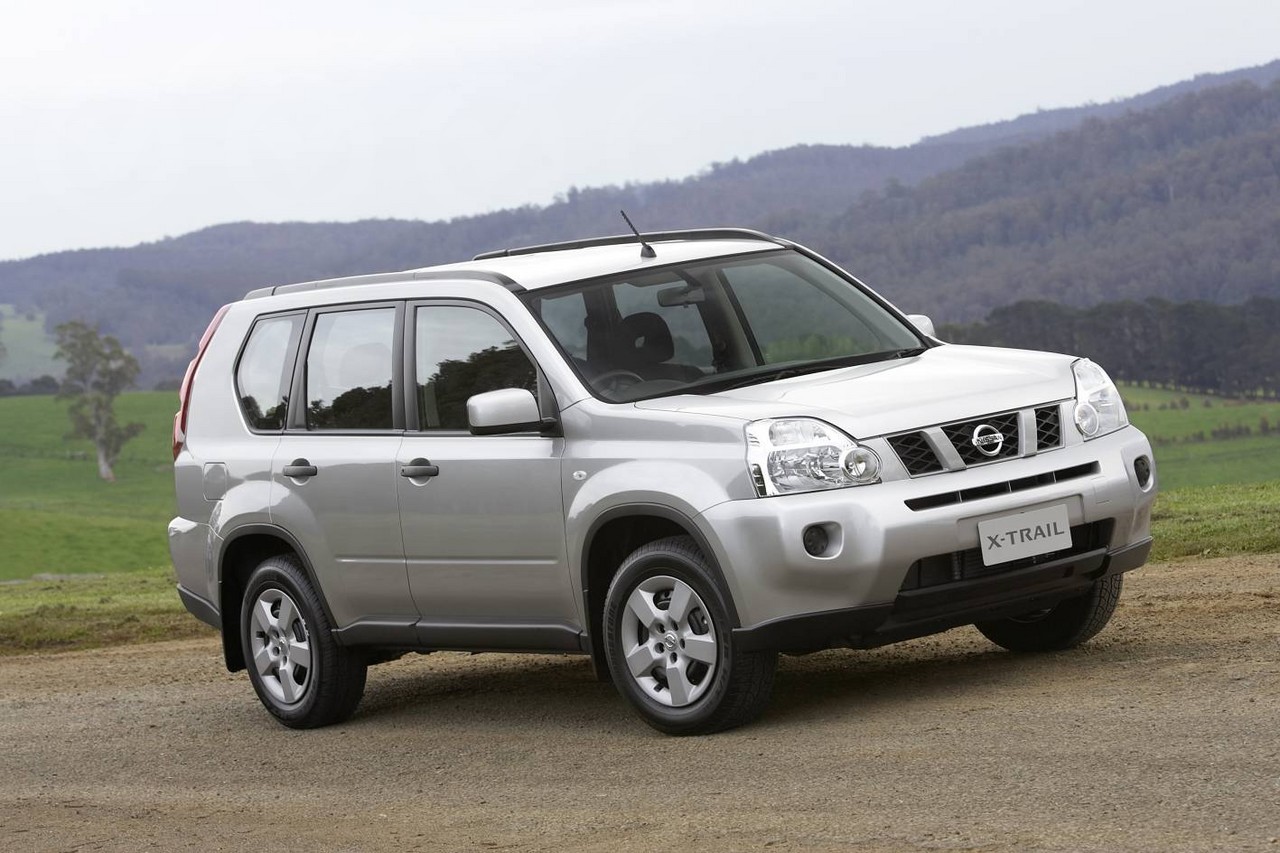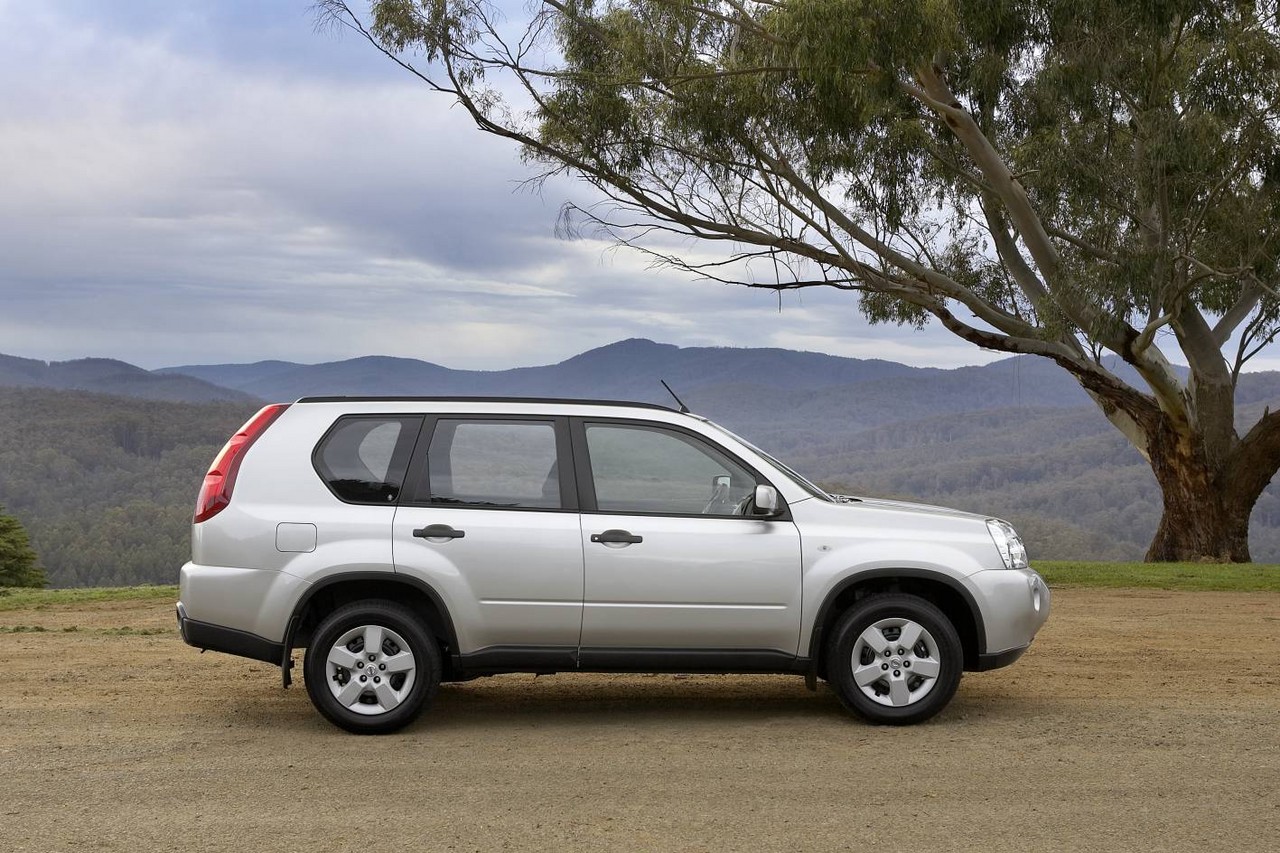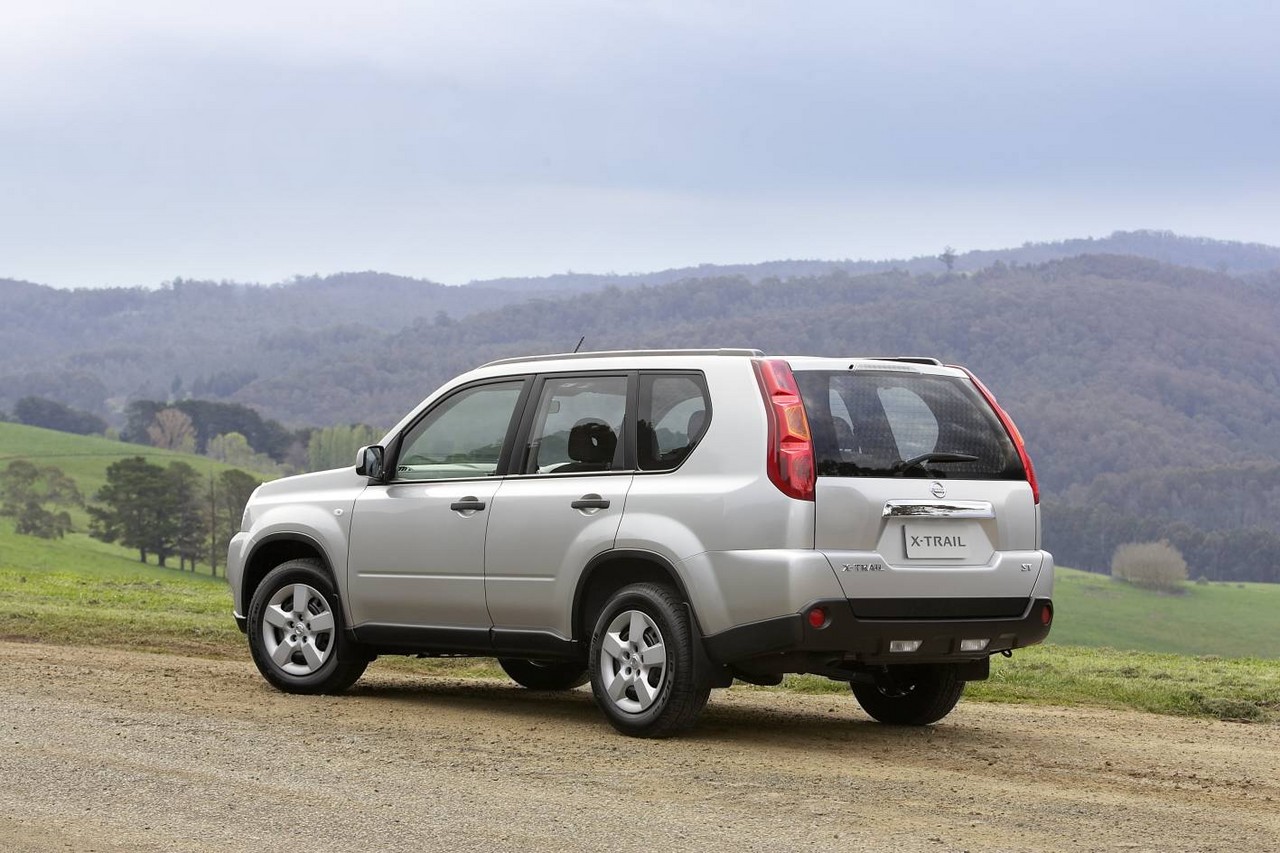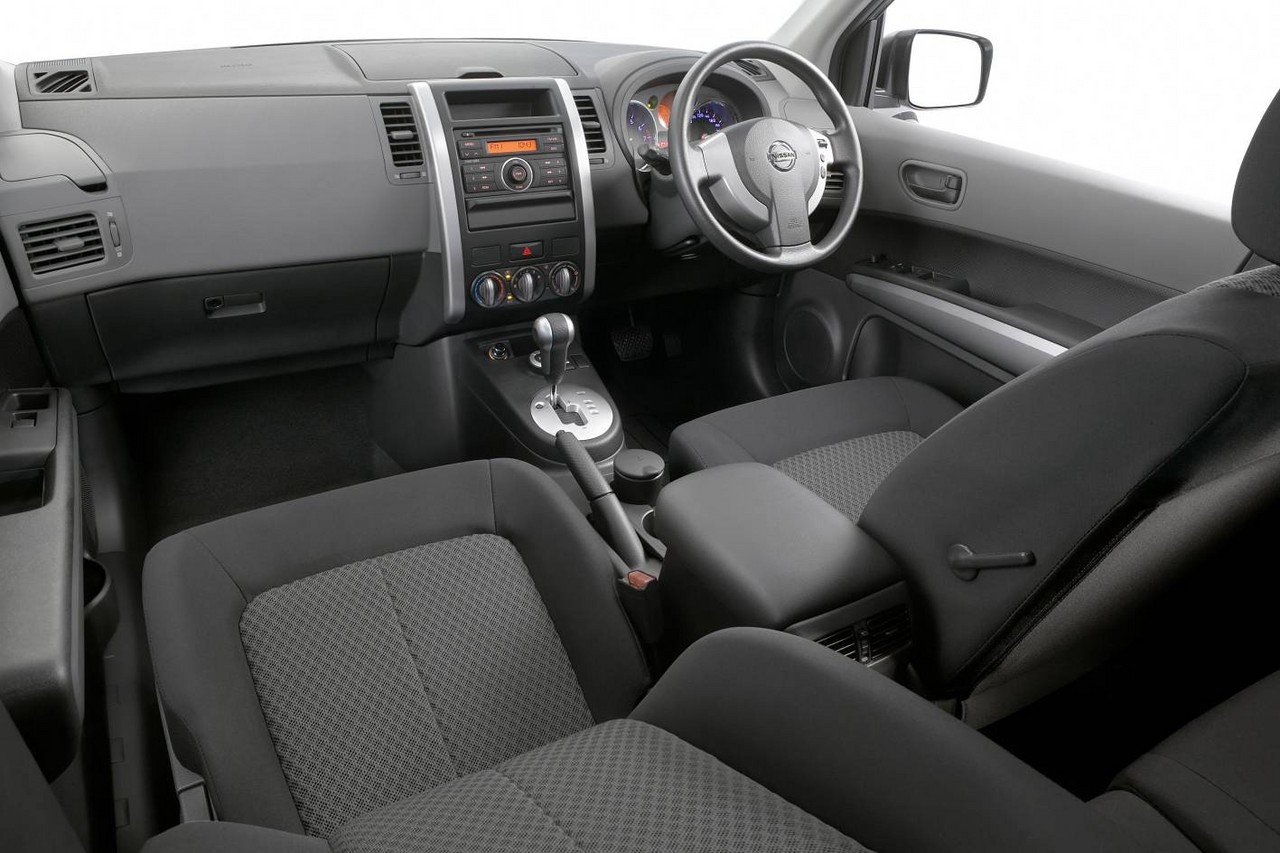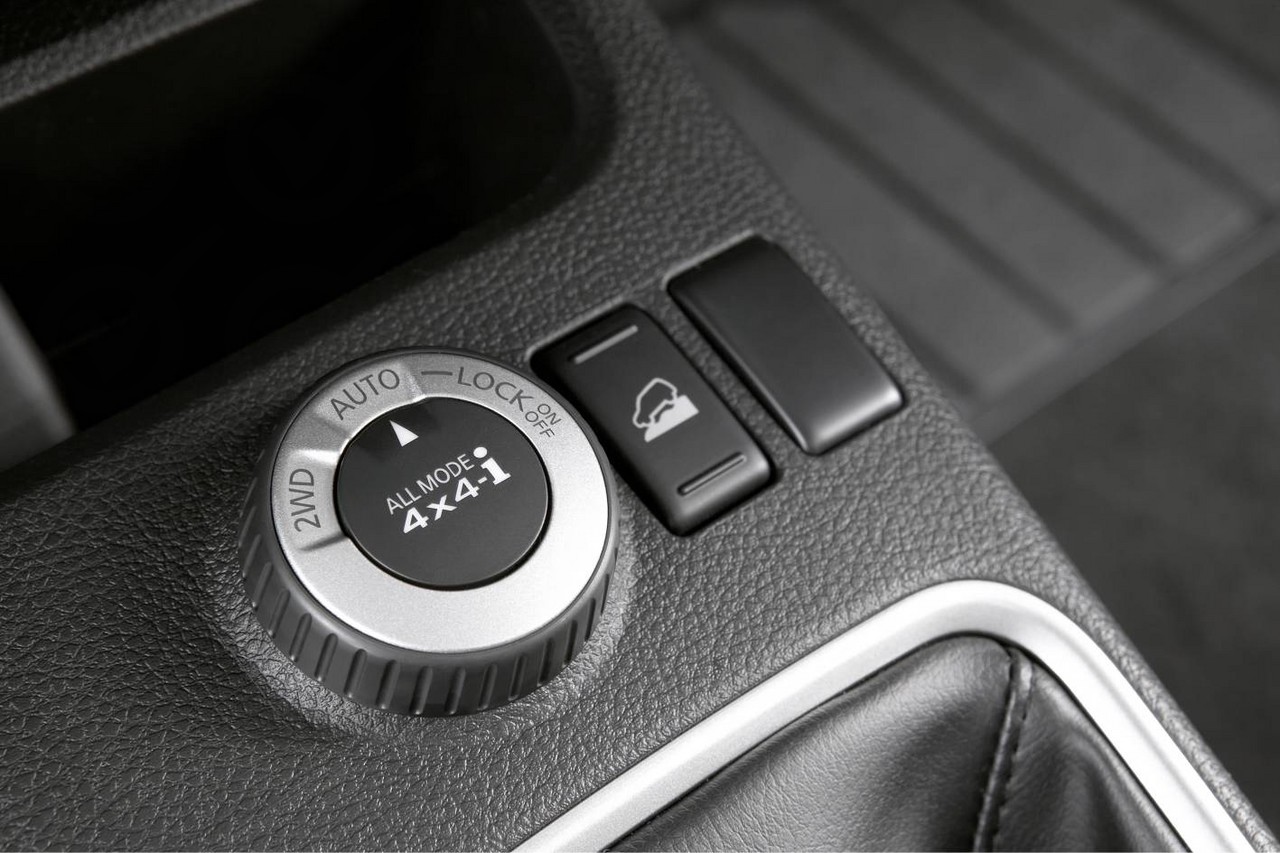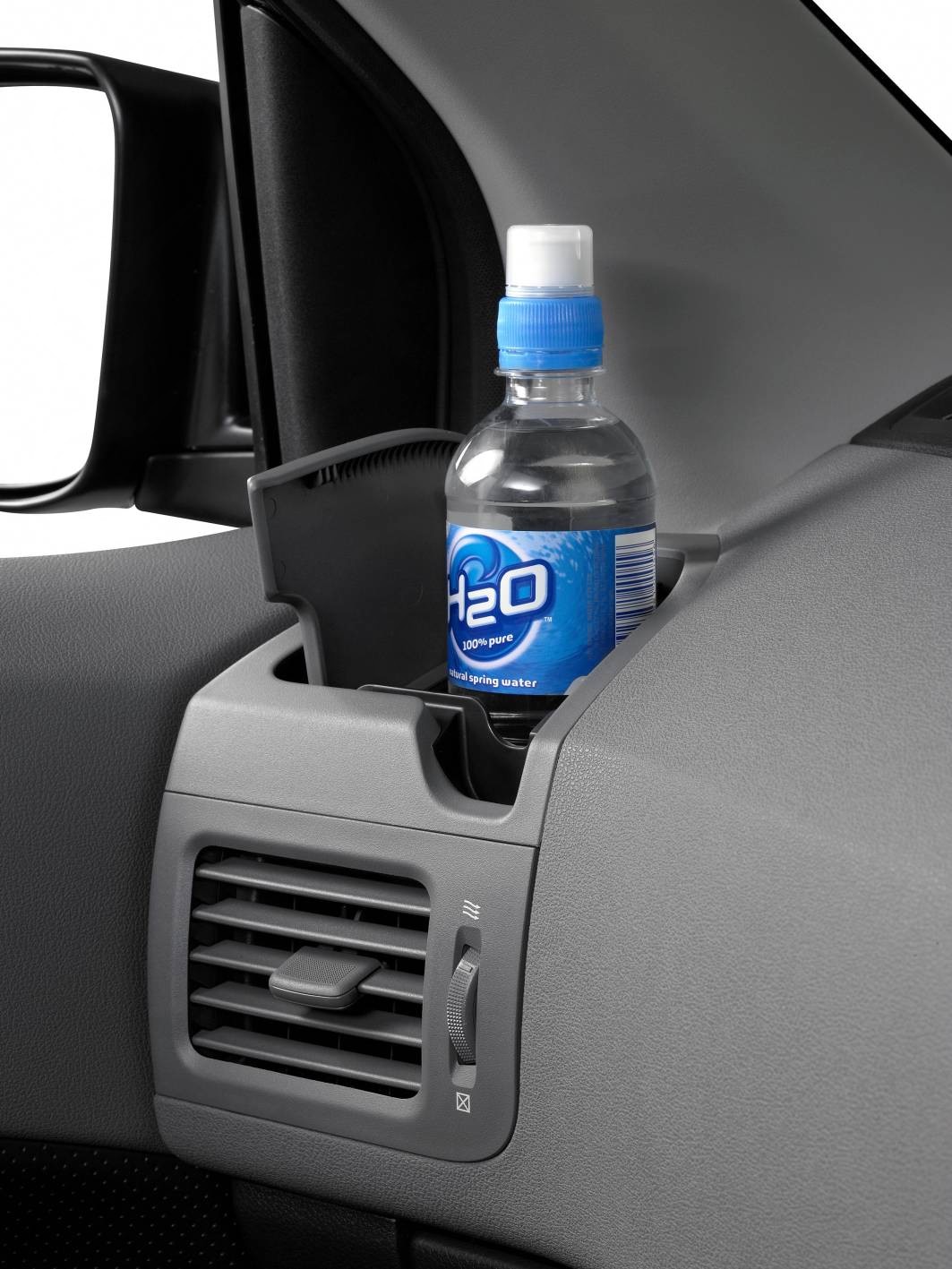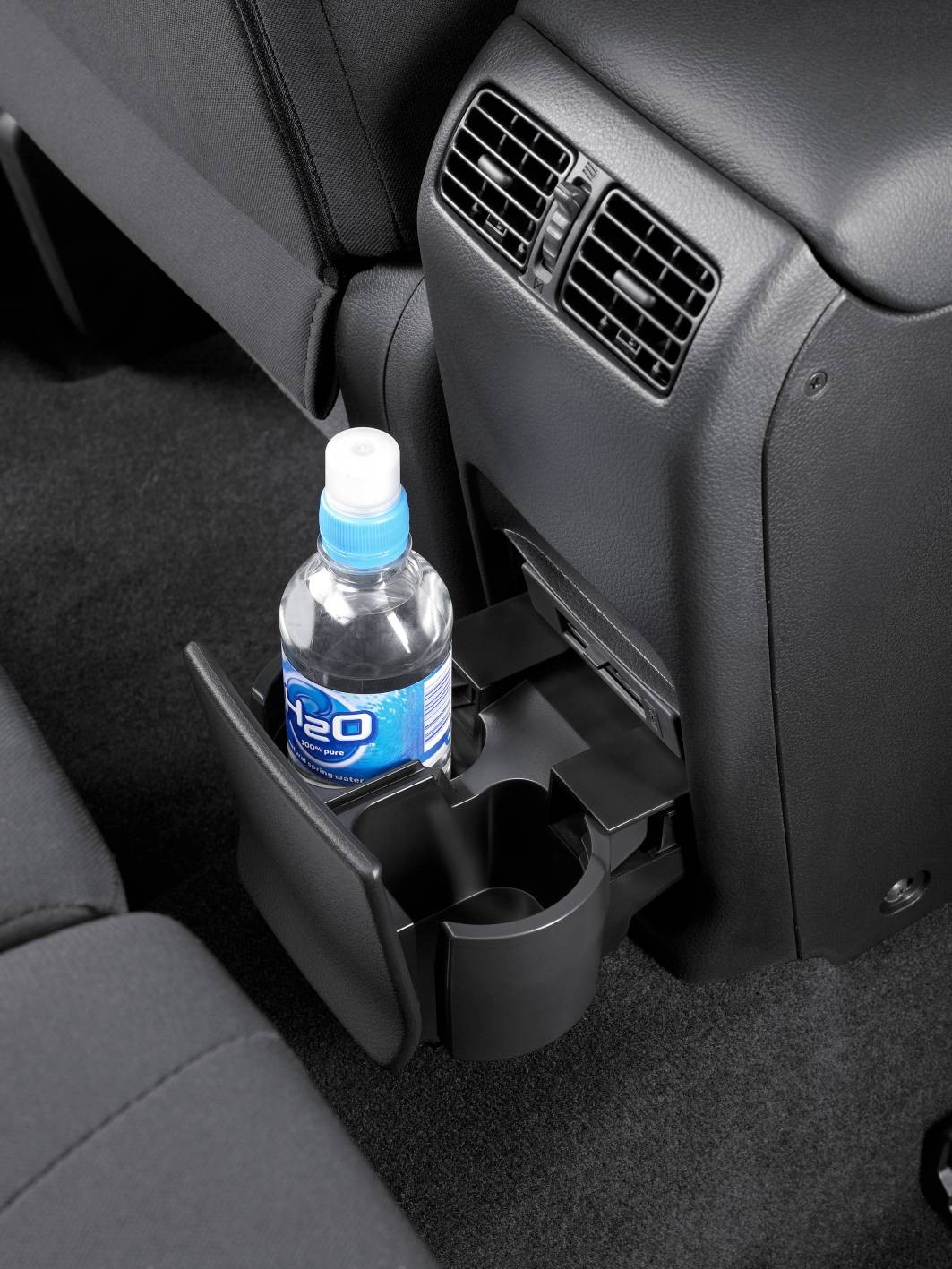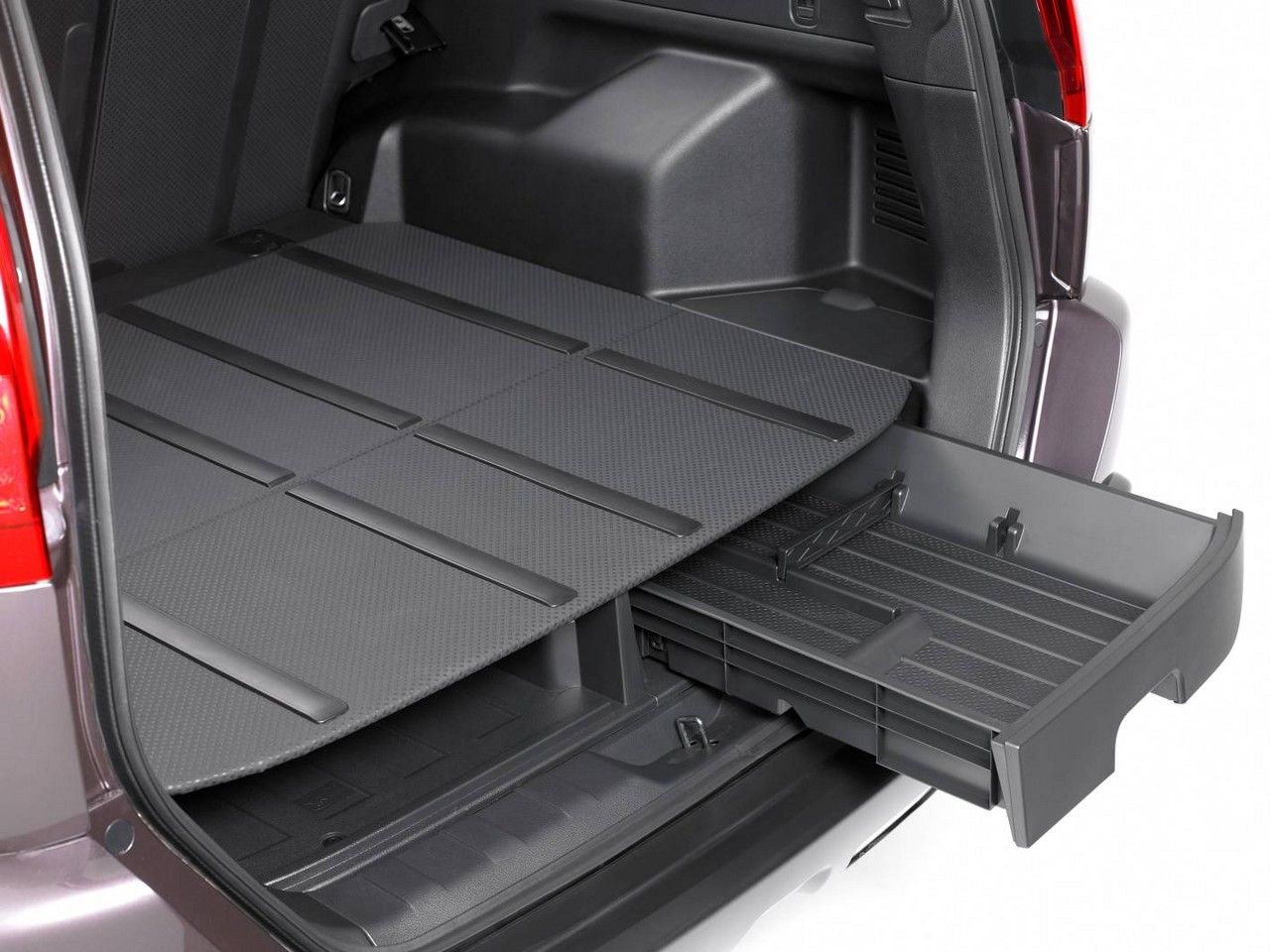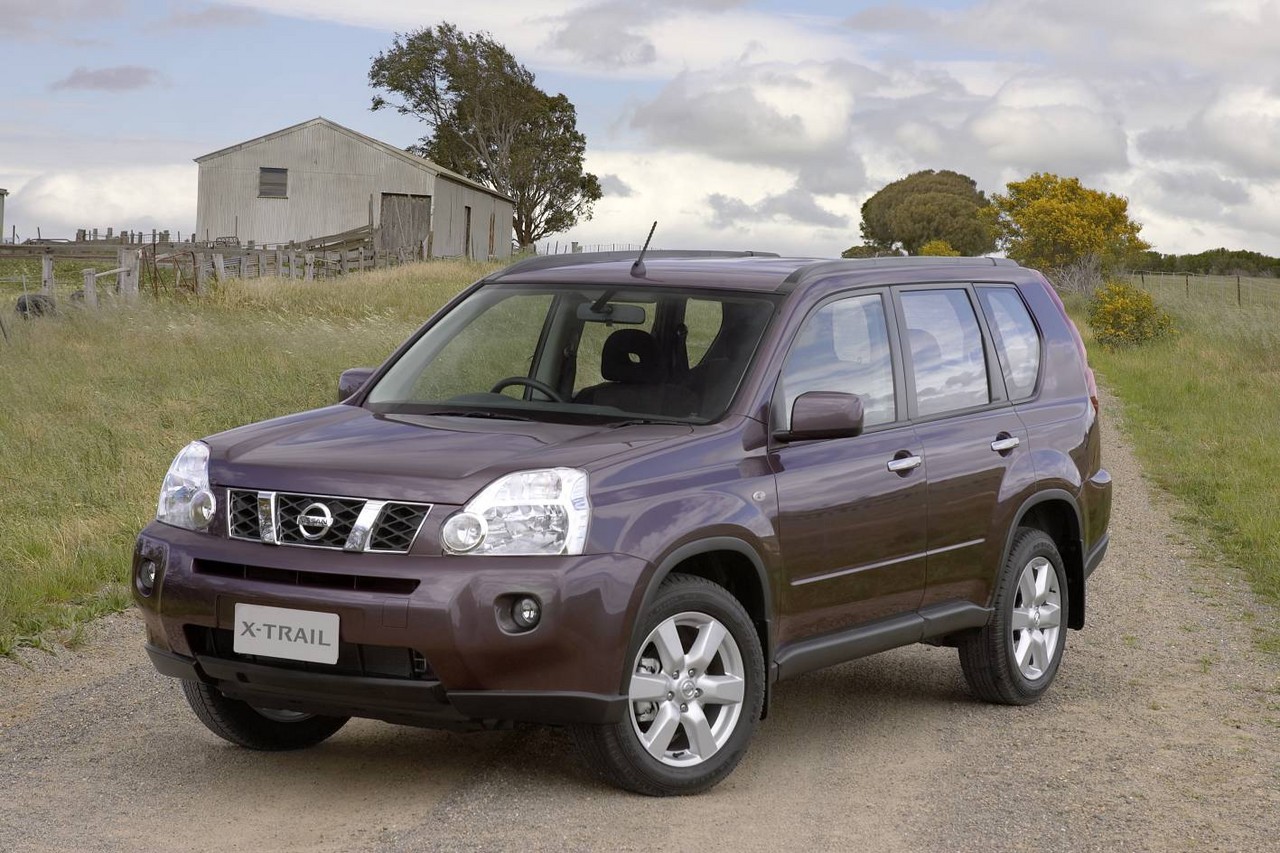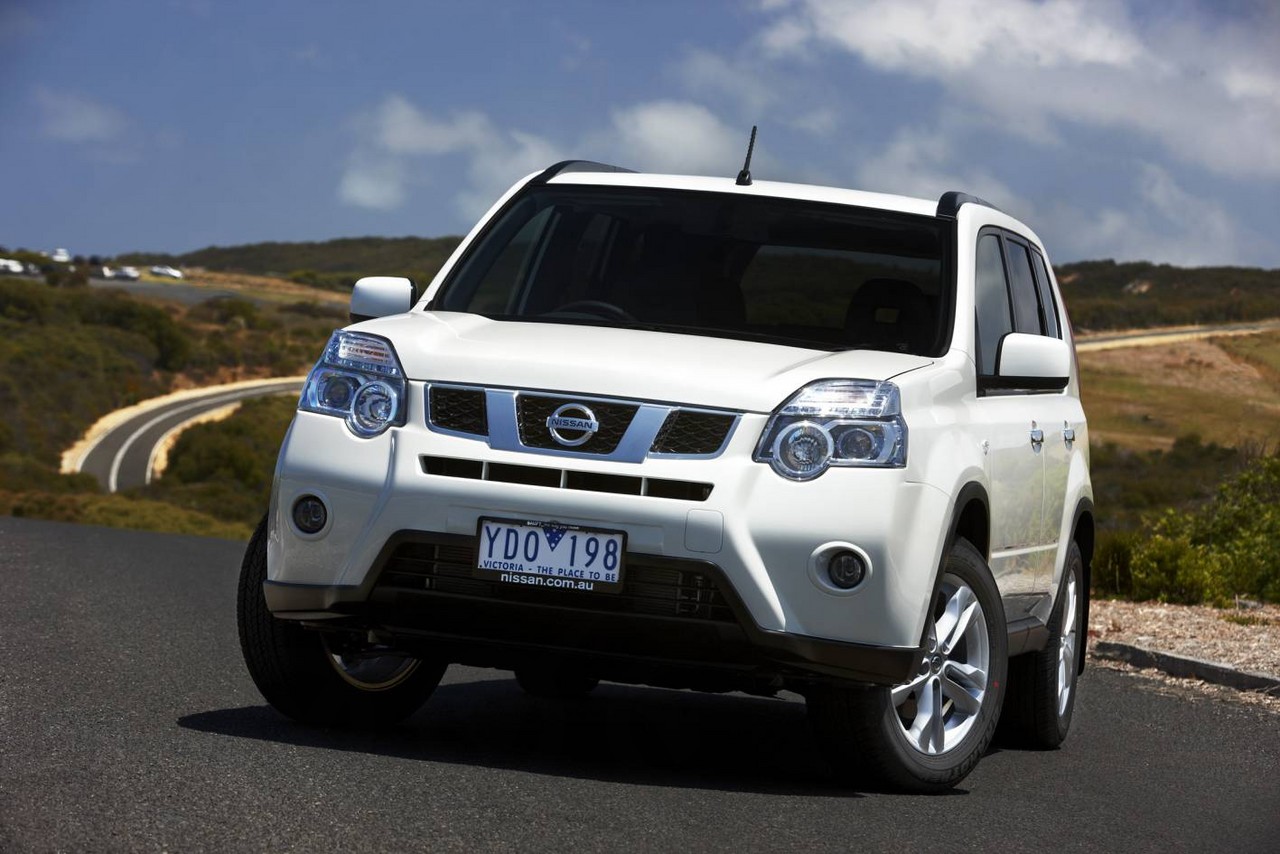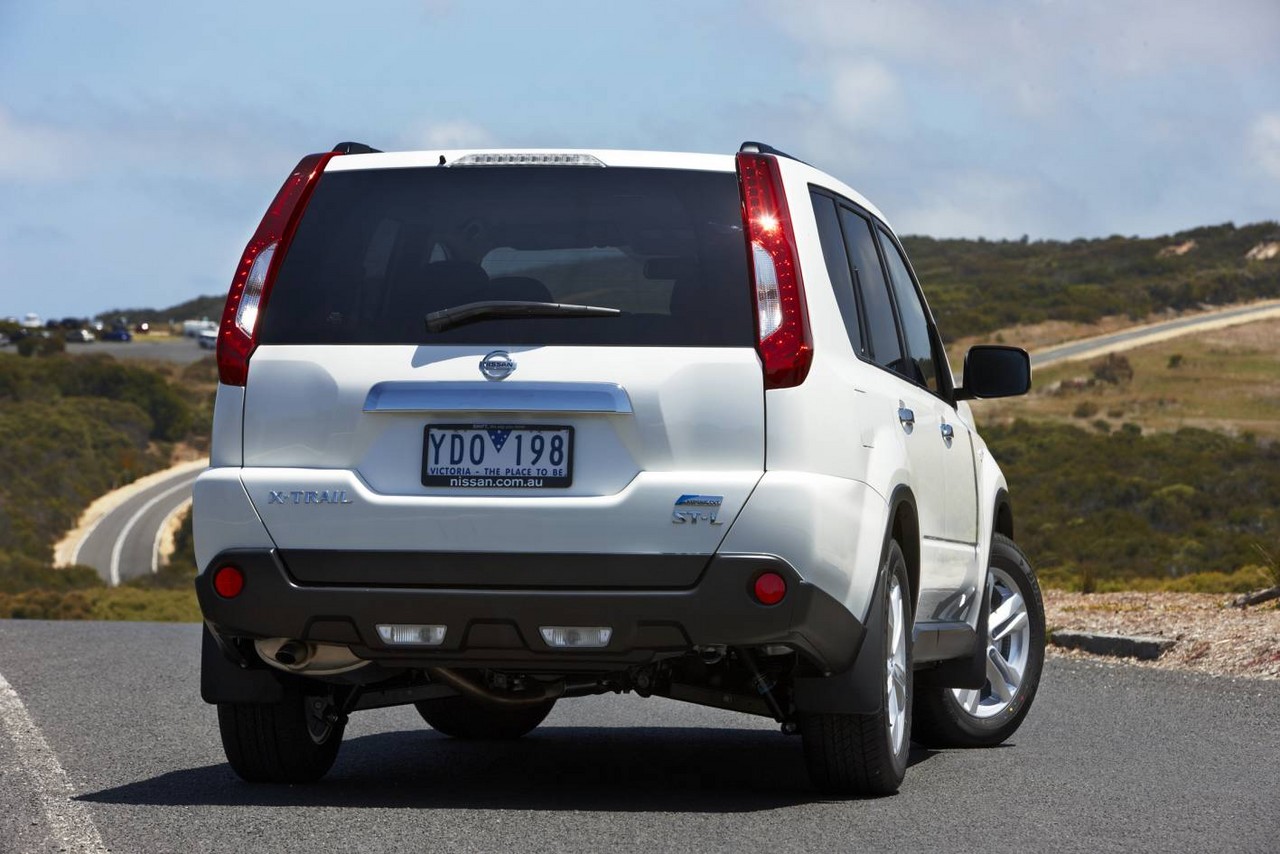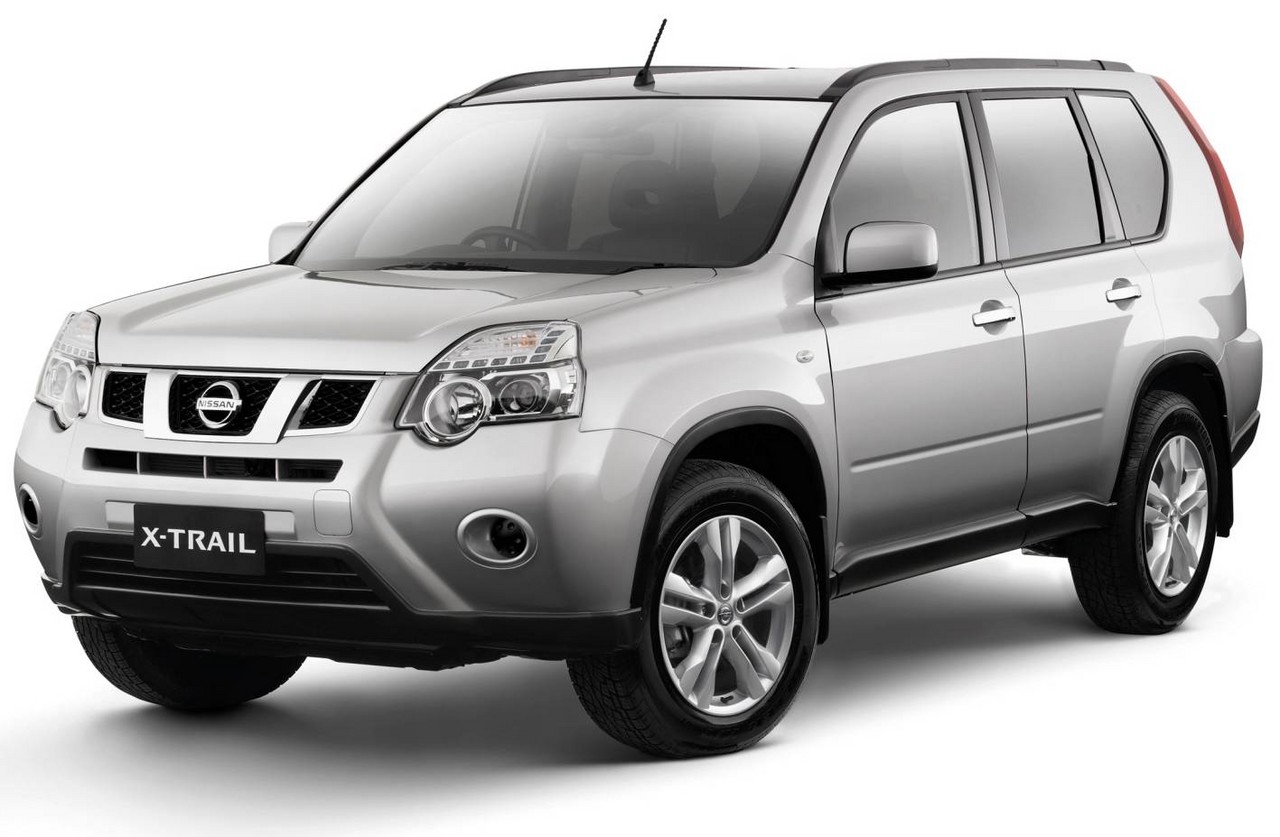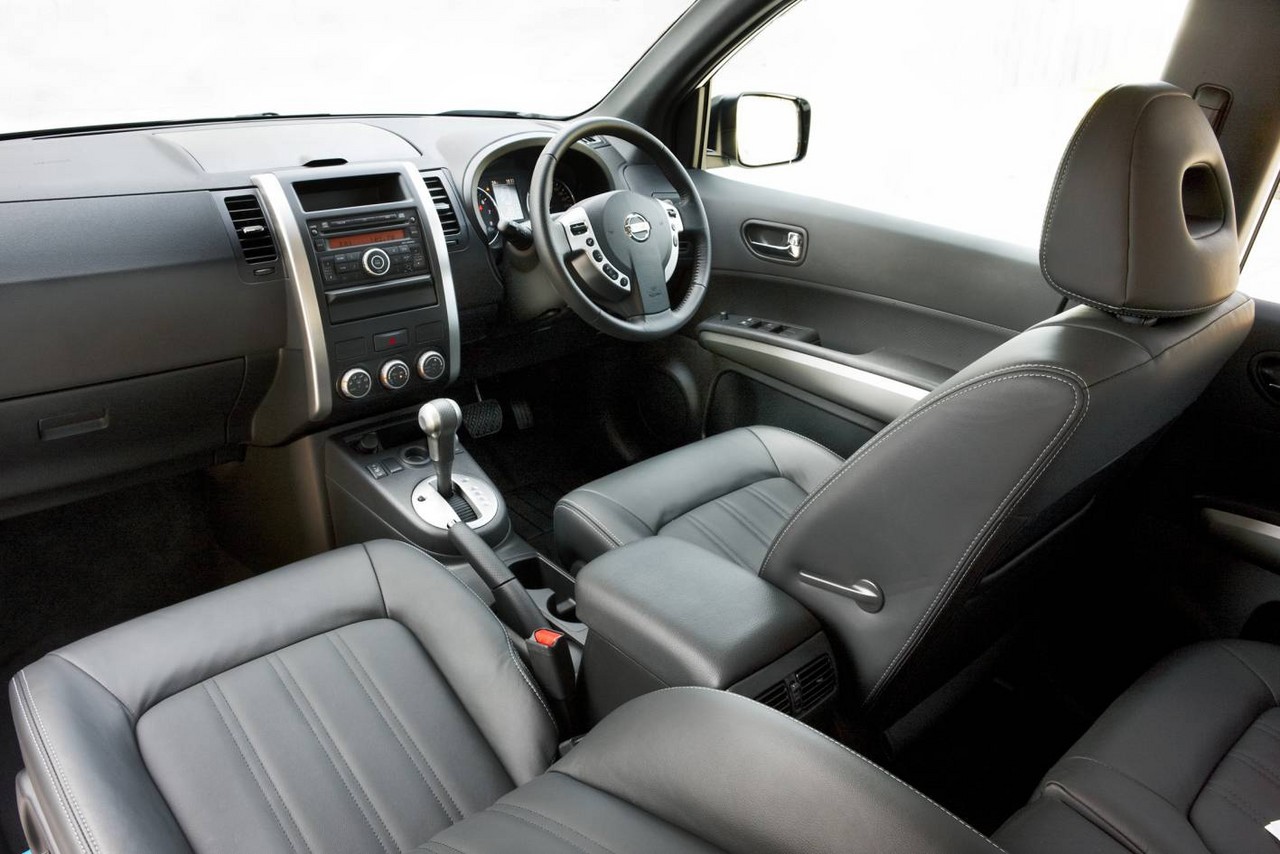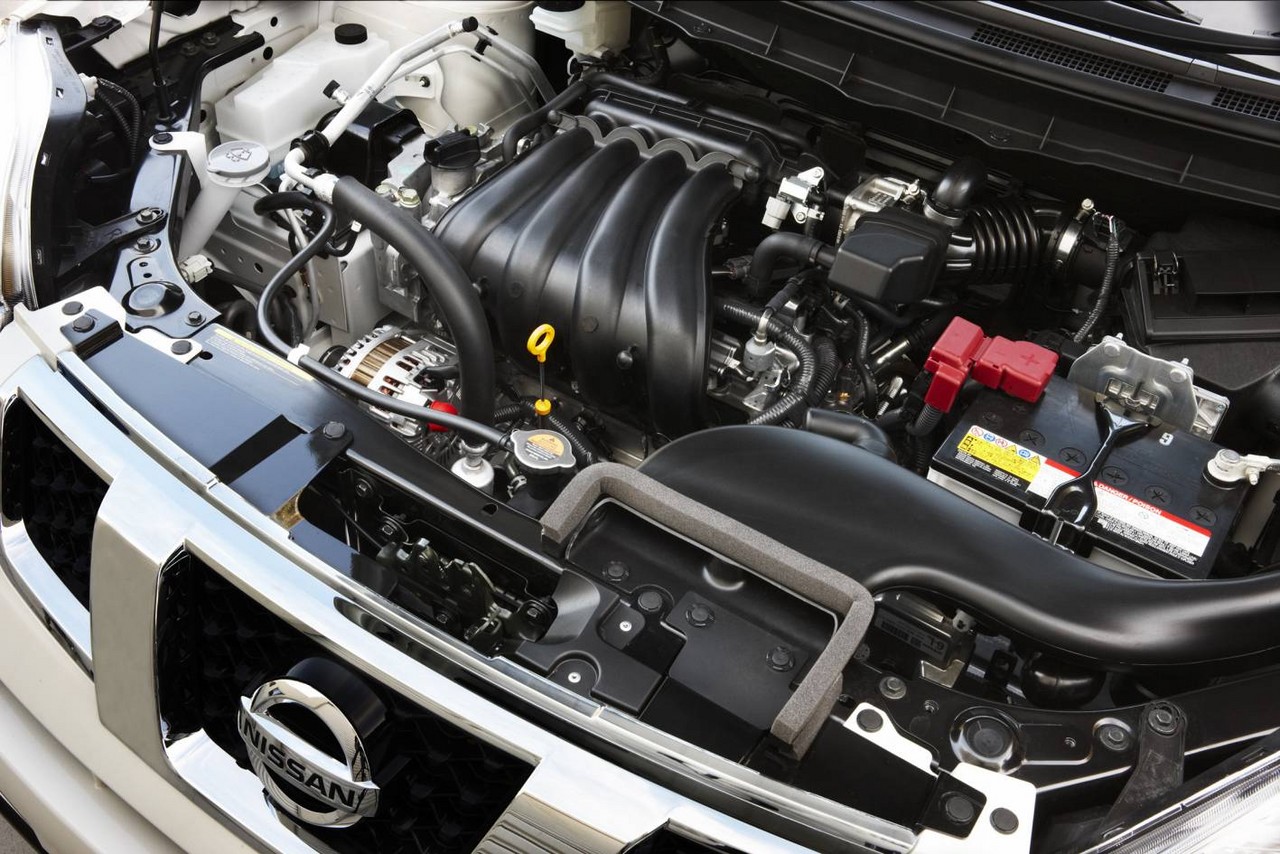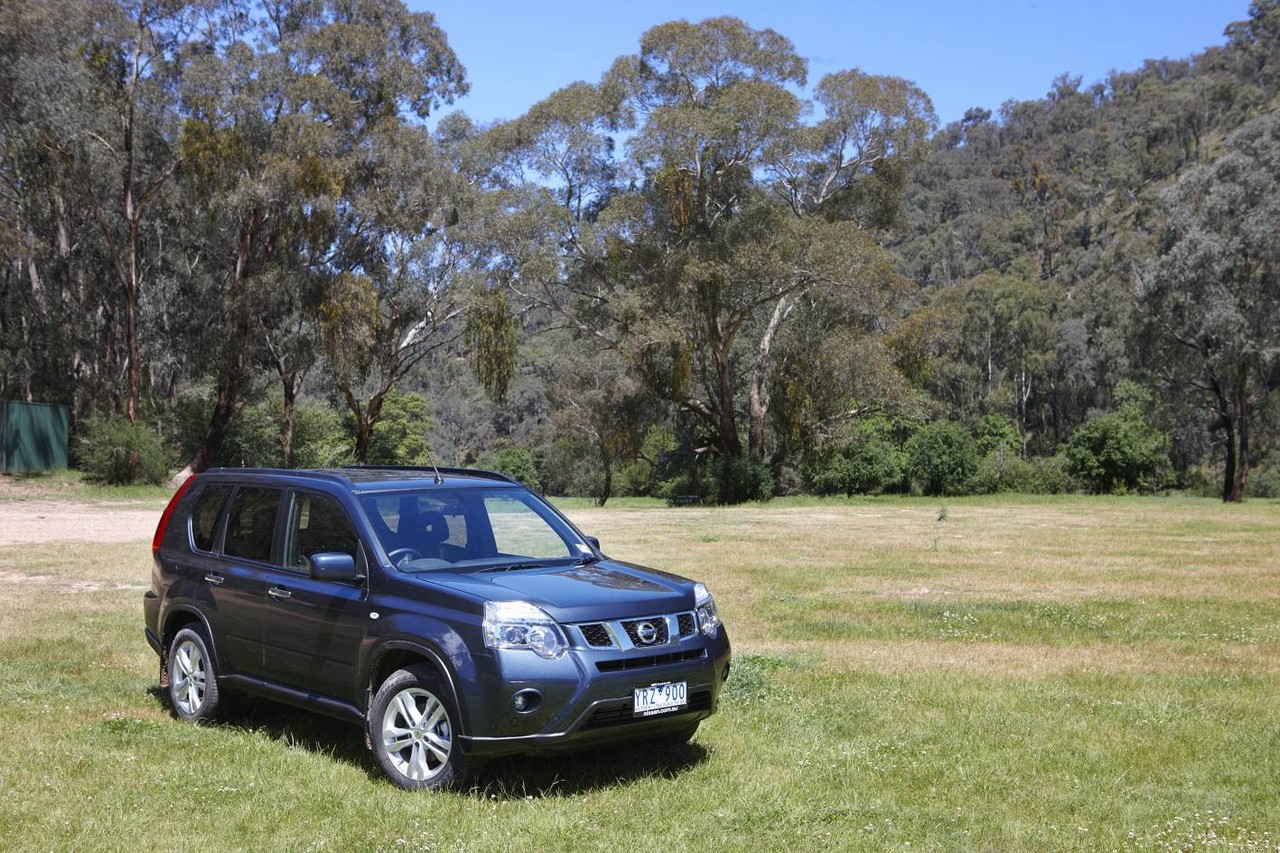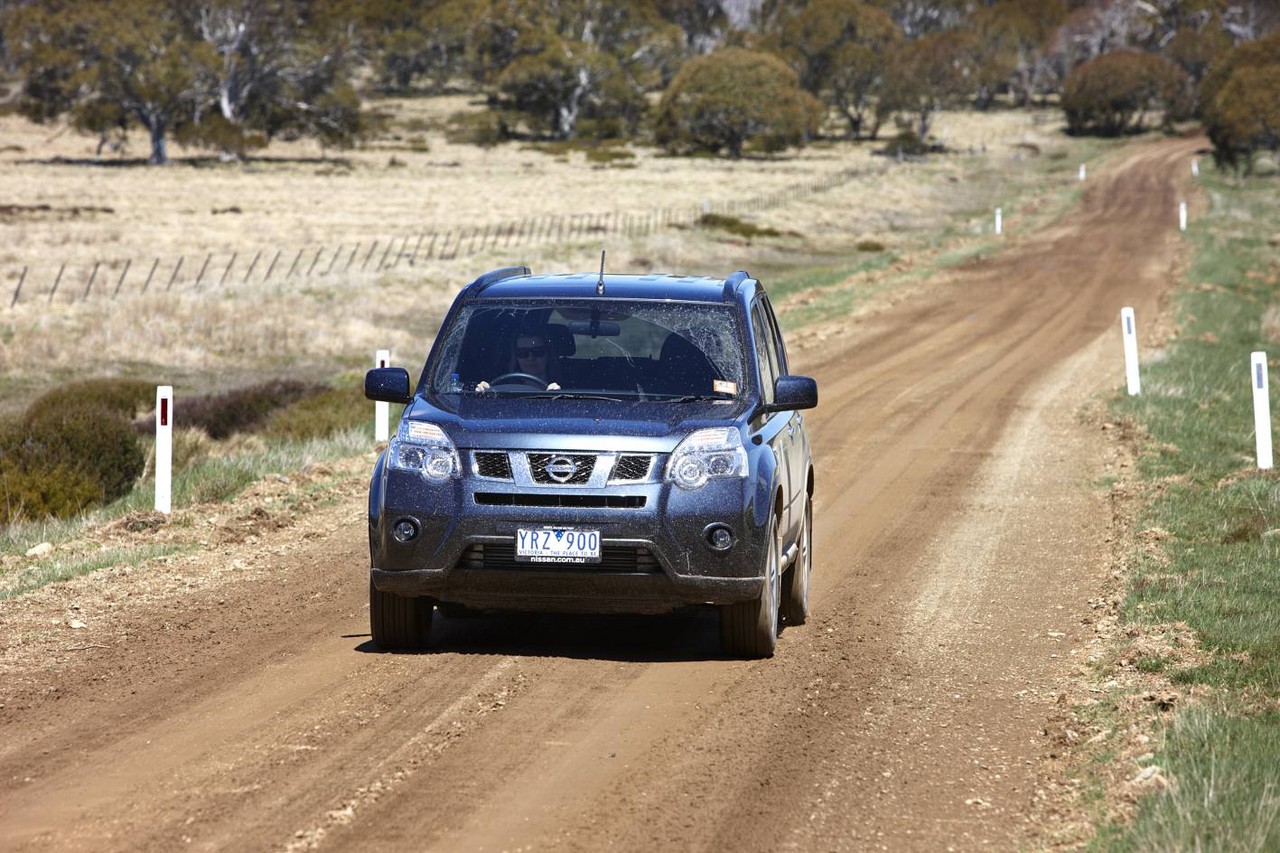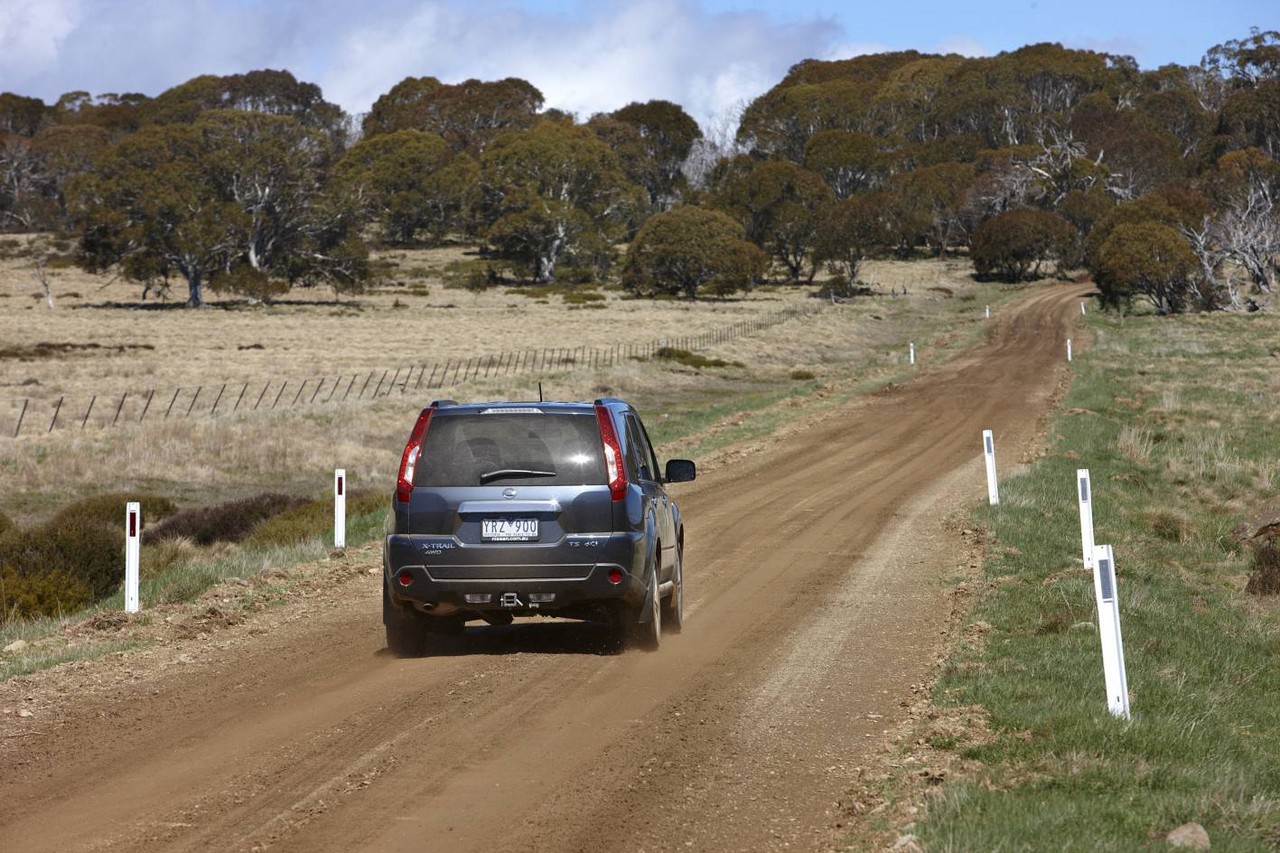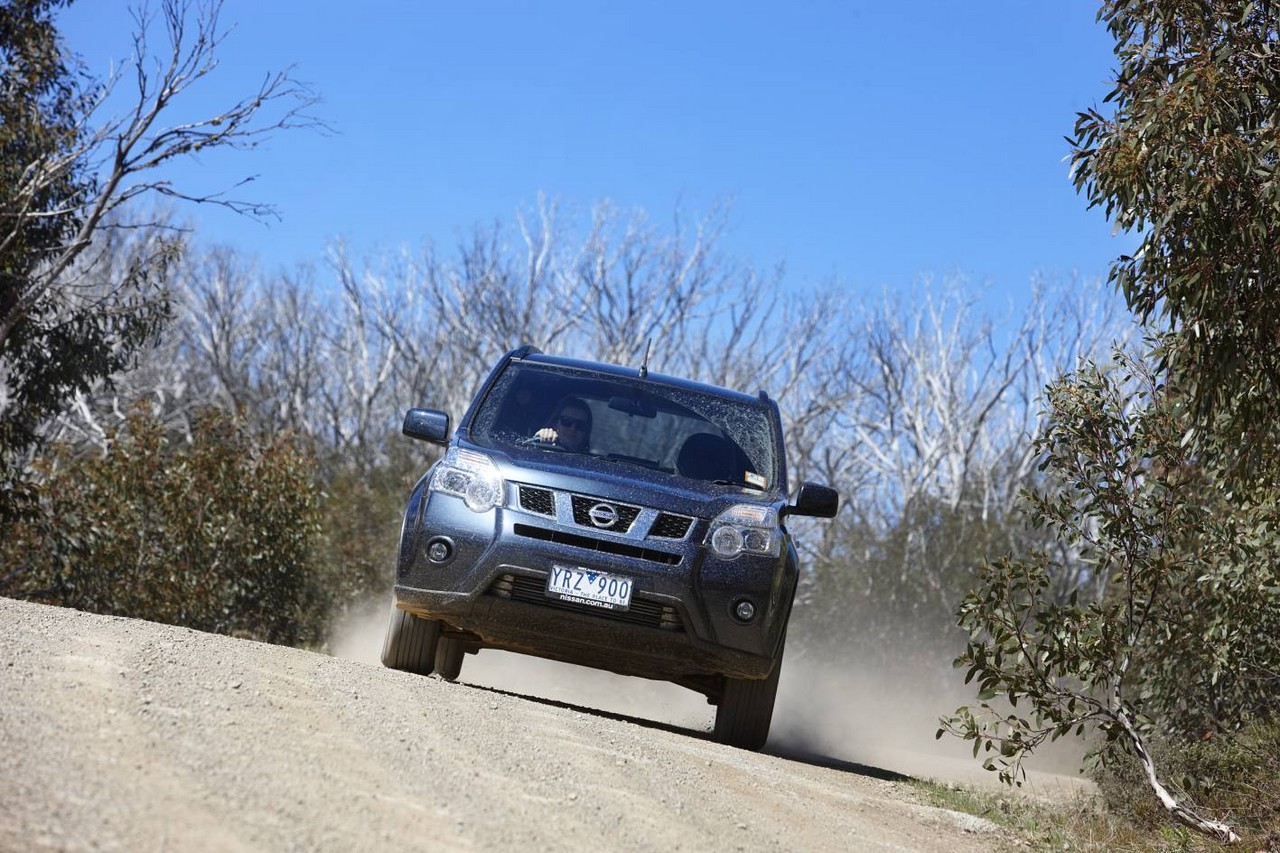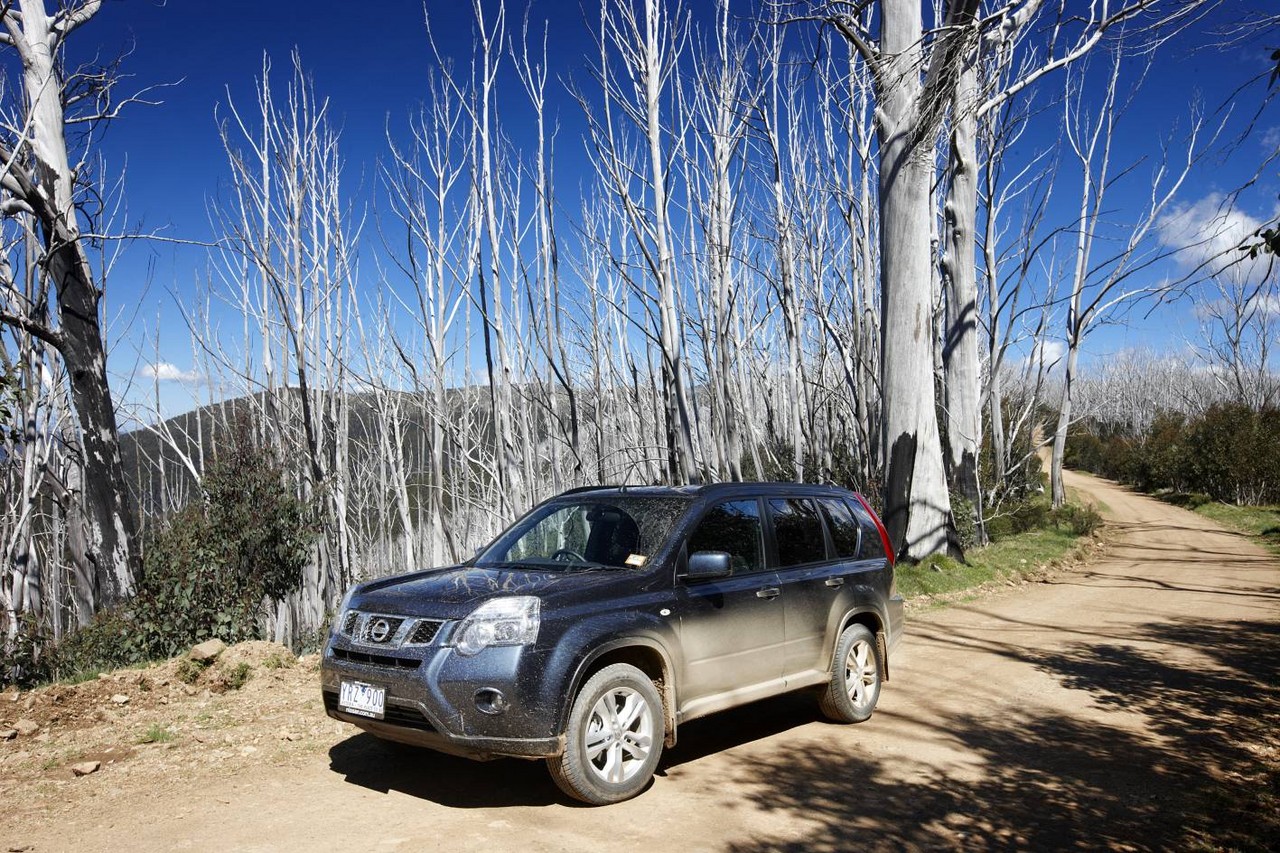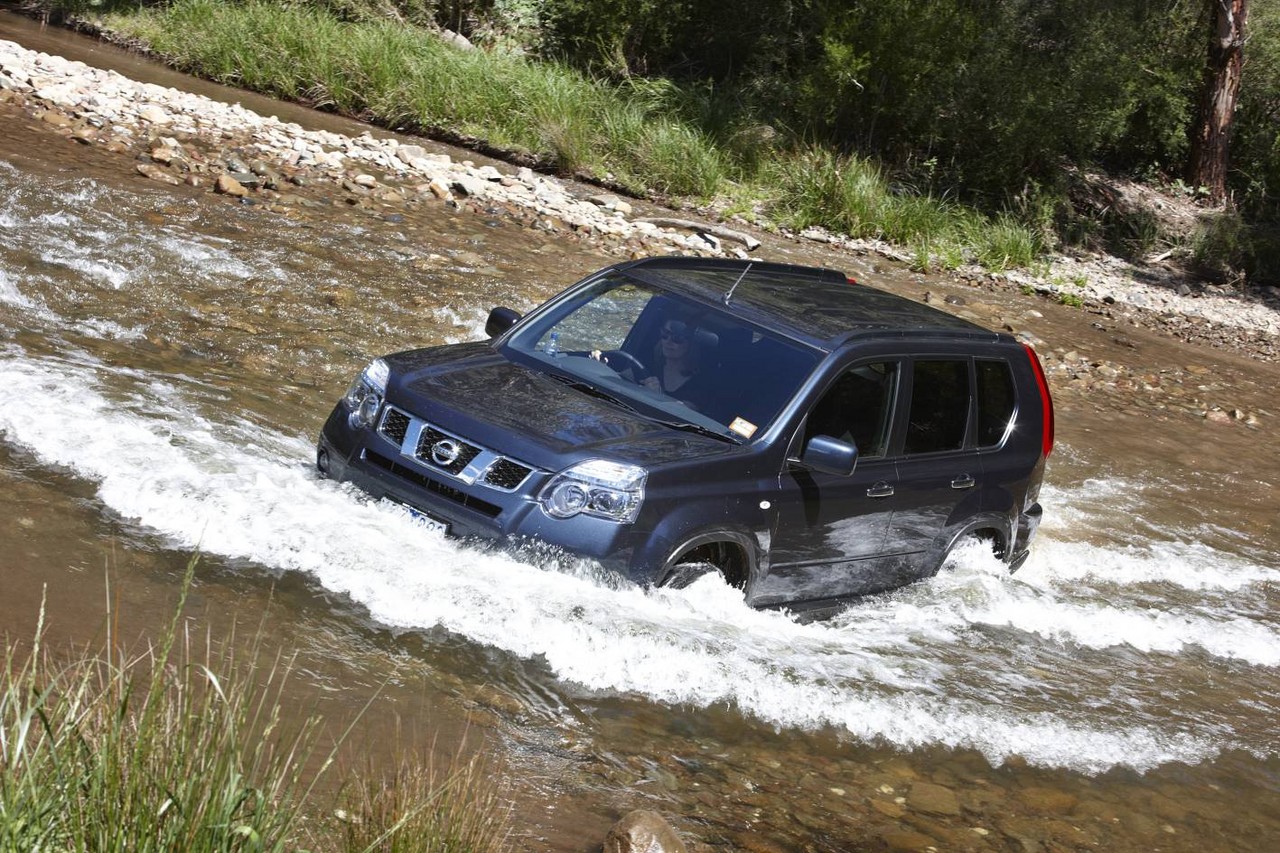
- Refined 2.5-litre petrol engine
- Responsive 2.0-litre turbo-diesel engine
- Competent ride/handling balance
- Quiet, well-insulated cabin
- Off-road traction of 4×4-i system
- Soft front seats lack support
- Steering lacks feel
- Arm rest makes centre rear seat uncomfortable
Review: Nissan T31.I X-Trail (2007-10)
Overview
Released in October 2007, the Nissan T31 Series I (T31.I) X-Trail was a five-seat SUV. Manufactured in Japan, the T31 X-Trail was initially powered by a 2.5-litre four-cylinder petrol engine mated to either a six-speed manual or a continuously variable transmission and available in three variants: ST, ST-L and Ti. In July 2008, however, the range was expanded with the introduction of a 2.0-litre four-cylinder turbo-diesel engine – mated to either six-speed automatic or manual transmission – and available in TS and TL variants.
Compared to the T30 X-Trail , the T31 X-Trail was 120 mm longer (at 4630 mm), 20 mm wider (1785 mm), 10 mm taller (1685 mm) and had a 5 mm longer wheelbase (2630 mm). Furthermore, the new body achieved a 30 per cent increase in torsional stiffness. The T31 X-Trail had MacPherson strut front suspension and parallel multi-link strut rear suspension.
| Drive | Engine | Years | Variants | Trans. | Peak power | Peak torque |
|---|---|---|---|---|---|---|
| All Mode 4×4-i | 2.5-litre petrol I4 (QR25DE) |
2007-10 | ST, Adventure, ST-L, Ti |
6sp man., CVT | 125 kW at 6000 rpm | 226 Nm at 4400 rpm |
| 2.0-litre turbo-diesel I4 (M9R) |
2008-10 | TS, TL |
6sp man. | 127 kW at 3750 rpm | 360 Nm at 2000 rpm | |
| 6sp auto | 110 kW at 4000 rpm | 320 Nm at 2000 rpm |
All Mode 4×4-i
The X-Trail was fitted with Nissan’s ‘All Mode 4×4-i’ system which utilised an electronically-controlled coupling. The system had three drive modes could be selected via a two-position, three-mode rotary knob located behind the gear lever on the centre console:
- 2WD: front-wheel drive only;
- AUTO: predominantly front-wheel drive but with a predictive mode which could anticipate the risk of wheel spin based on throttle position and engine torque. As such, up to 50 per cent of the engine’s torque could be redirected to the rear axle if required; and,
- LOCK: permanent four-wheel drive for speeds of up 40 km/h.
The X-Trail also had ‘Uphill Start Support’ (also known as hill start assist) and ‘Downhill Drive Support’ (hill descent control) functions.
Safety equipment
Standard safety equipment for the T31 X-Trail included dual front airbags, front side airbags, full-length curtain airbags (i.e. for front and rear occupants), ABS, electronic brake force distribution, brake assist, electronic stability control, traction control, active front seat head restraints and front seatbelt pretensioners.
Euro NCAP crash testing
In Euro NCAP crash testing , a 2007 X-Trail fitted with a 2.0-litre turbo-diesel engine received a four star adult occupant protection rating with a score of 29.59; this score, however, included three points for seatbelt reminders which were not available in Australia. As such, the Australia-specific score for the T31 X-Trail was 26.59 out of 37. In the frontal offset impact test, protection from serious leg injury was marginal for the front occupants, while neck protection was poor for the driver. In the side impact and pole tests, however, the X-Trail received maximum points.
Features: X-Trail ST, ST-L, TS, TL and Ti
Standard features for the X-Trail ST included 16-inch steel wheels with 215/65 R16 tyres (with a full-size spare), a four speaker sound system with CD player, air conditioning, cruise control, a cooled glovebox, leather-wrapped steering wheel, remote central locking, power mirrors and windows, a tilt adjustable steering wheel, height adjustable driver’s seat, 12 volt power outlet, trip computer, roof rails and an immobiliser. Inside, the rear seat could split and fold 40/20/40 to create a flat floor, but could slide fore or aft; the cargo area also included a washable floor with under-floor drawers.
Compared to the ST, the X-Trail ST-L and TS were further equipped with 17-inch alloy wheels with 215/60 R17 tyres, a six speaker sound system with six-stack CD player, climate control air conditioning, front fog lights and a full size spare alloy wheel.
Beyond this, the X-Trail TL and Ti were distinguished by their leather seats, power adjustable and heated front seats, rear parking sensors and a power sunroof.
2009 X-Trail Adventure
In July 2009, a limited-run Adventure variant was released. Based on the ST variant, the Adventure was distinguished by its 16-inch alloy wheels, front ‘nudge’ bar, roof racks, cargo blind, rear privacy glass and badging. The Adventure variant was available in Platinum, White Diamond and Burning Red paint finishes.
December 2009: X-Trail update
The T31.I X-Trail range was updated in December 2009, with standard features extended to include an iPod jack. Furthermore, the TS received Bluetooth connectivity and rear privacy glass, while the ST-L added leather seats with power adjustable and heated front seats. The range-topping Ti and TL variants were further equipped with 18-inch alloy wheels, satellite navigation with 7-inch touch screen LCD and reversing camera.
Review: Nissan T31.II X-Trail (2010-13)
Overview
Released in September 2010, the T31 Series II (T31.II) X-Trail introduced a revised range, improved fuel economy and revised styling. Visually, the T31.II X-Trail could be identified by its more protruding bumper, new grille, headlights, LED tail-lights and new alloy wheel designs. Inside, there were improved materials, thicker seat fabrics, an easier-to-read instrument cluster and redesigned front seats for improved rear seat leg room.
As part of the update, the 2.5-litre petrol-engined manual ST-L and Ti variants were discontinued. To improve fuel economy, the T31.II X-Trail introduced revised gear ratios, improved aerodynamics and an upgraded six-speed automatic transmission for the diesel engines (with a ‘near neutral’ position for when the vehicle was stationary).
In January 2011, the range was expanded with the introduction two-wheel drive models that were powered by a 2.0-litre four-cylinder petrol engine.
| Drive | Engine | Years | Variants | Trans. | Peak power | Peak torque |
|---|---|---|---|---|---|---|
| FWD | 2.0-litre petrol I4 (MR20DE) |
2011-13 | ST, ST-L |
6sp man., CVT | 102 kW at 6000 rpm | 198 Nm at 4400 rpm |
| All Mode 4×4-i | 2.5-litre petrol I4 (QR25DE) |
2010-13 | ST | 6sp man., CVT | 125 kW at 6000 rpm | 226 Nm at 4400 rpm |
| ST-L, Ti |
CVT | |||||
| 2.0-litre turbo-diesel I4 (M9R) |
2010-13 | TS, TL | 6sp man. | 127 kW at 3750 rpm | 360 Nm at 2000 rpm | |
| 6sp auto | 110 kW at 4000 rpm | 320 Nm at 2000 rpm |
All Mode 4×4-i
As part of the update, the X-Trail’s ‘All Mode 4×4-i’ system had a recalibrated hill descent control mode which enabled the driver to control the speed of the descent between 4 and 15 km/h.
Features
Compared to its T31.I predecessor, the T31.II ST variant featured a six-disc CD player, Bluetooth connectivity with steering wheel controls, a heated and cooled glovebox and telescopic steering wheel adjustment.
The ST-L and TS were further equipped with double five-spoke 17-inch alloy wheels with 225/60 R17 tyres, rear cargo blind and a leather-wrapped steering wheel, gearshift and park brake lever.
Beyond this, the Ti and TL were differentiated by their 18-inch alloy wheels with 225/55 R18 tyres, xenon headlights with washers, keyless start, automatic headlights and rain-sensing wipers.
May 2012: X-Trail update
From May 2012, the Ti and TL variants were fitted with Nissan’s ‘Around View Monitor’ parking assist system which utilised four separate cameras to project a bird’s eye view of the vehicle onto the central display.
2013 X-Trail Adventure Special Edition
In April 2013, a limited-run Adventure Special Edition was released. Compared to the Ti variant on which it was based, the Adventure Special Edition was fitted with Nissan roof bars and bike carriers and offered with a choice of four Avanti bicycle packages.
2013 X-Trail ST Limited Edition
In mid-2013, the ST Limited Edition was released. Compared to the standard ST variants, these Limited Edition models were further equipped with satellite navigation, a reversing camera, kick plates, carpet mats and a rear protection mat.
Brochures
Related links
